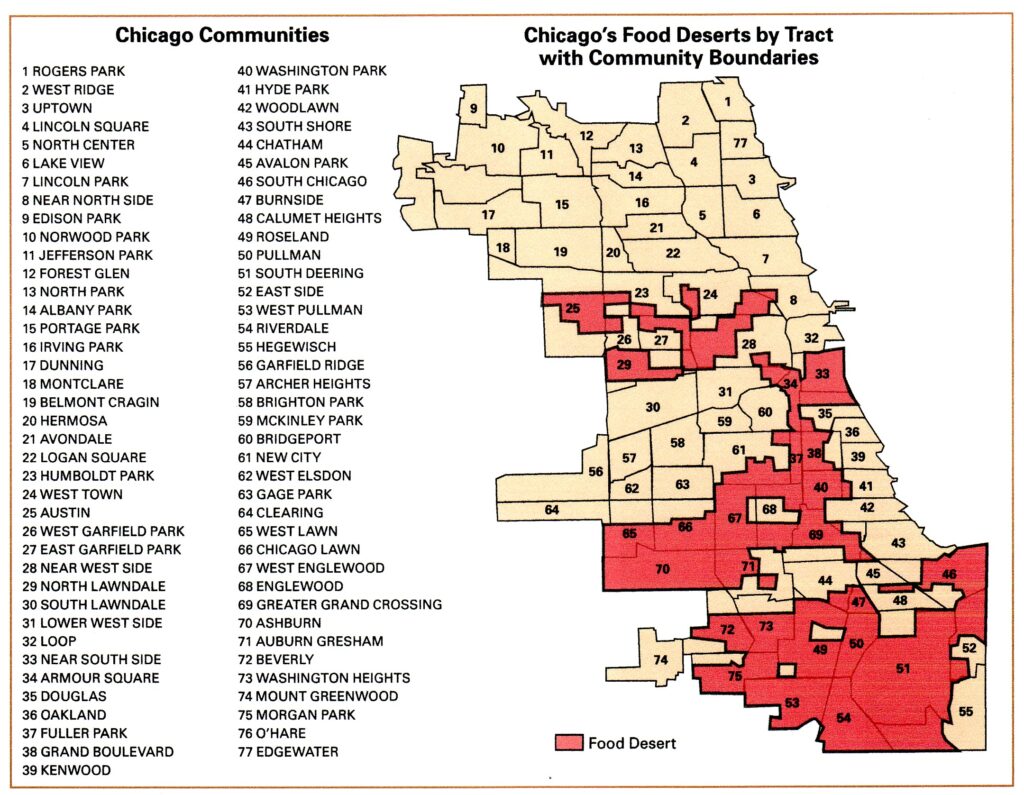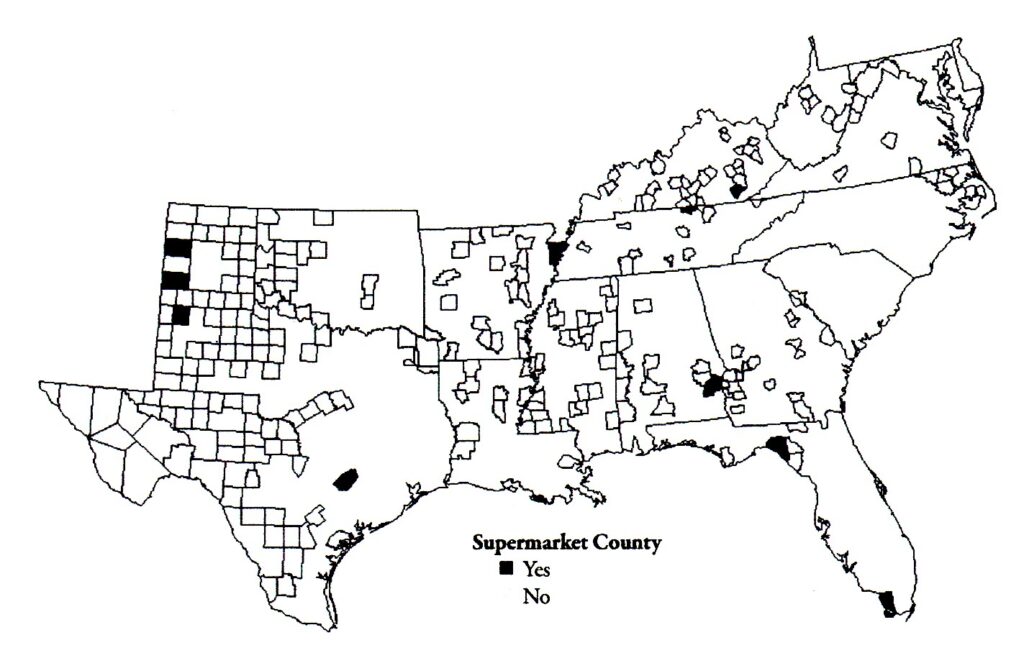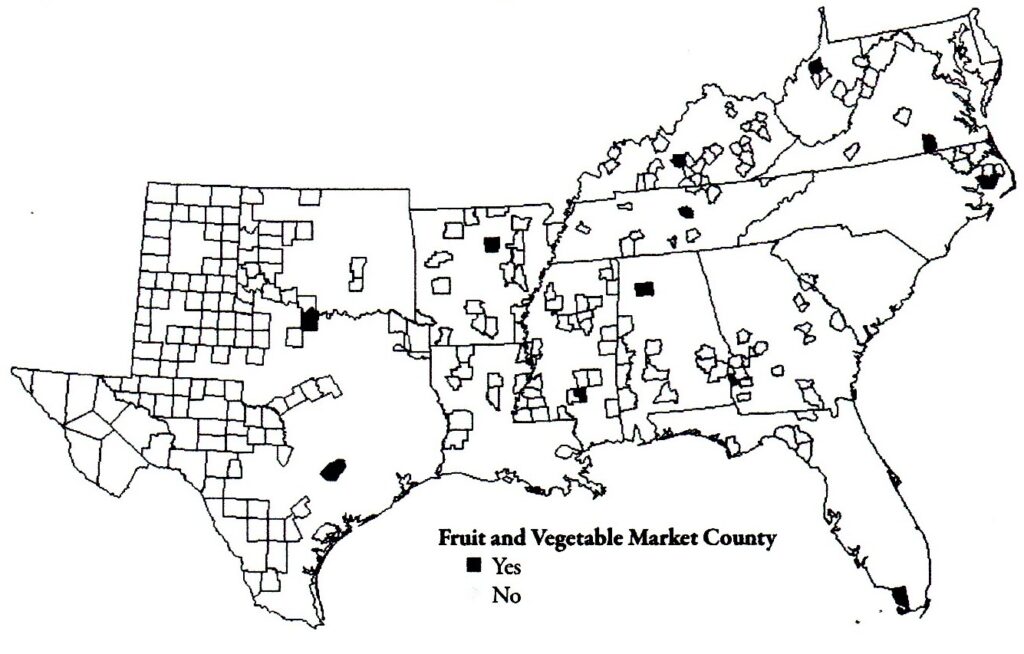Food Deserts
Thomas Britt, MD., MPH
A food desert is a large isolated geographic area without a mainstream grocery store or the store is distant 37. In an urban area, one may have to travel a mile to shop for food. Persons living in rural America may travel more than 20 miles. Troy Blanchard from Mississippi State University surmised that food deserts were worse in western United States where 44% of the county’s population has poor access to grocers; the Midwest was 34%; the South was 24%; and the Northeast was 10% 38. The lack of proximity to the consumer may be especially difficult for those relying on public or private transportation. Within those geographic areas, there is a preponderance of liquor stores, convenience stores, fast-food stores and gas stations. Most of these establishments have high prices and do not offer a wholesome supply of fresh fruits and vegetables.
The disparities of adequate grocery stores are becoming quite prevalent in Chicago, New York, Detroit, metropolitan Los Angeles and in other cities and rural America (see Figures 1-3, reprints from Food Availability & Food Deserts in the Non-metropolitan South40). The residents in these areas are filling-up on junk food and fast-food rather than a wholesome meal due primarily to what is immediately available and accessible. A close secondary explanation is lack of proper education on the value of good nutrition in our society. Nutritional education is woefully inadequate. Medical education and post-graduate medical education and training has not given nutrition a proper treatise in the prevention and management of diseases. When physicians say to their patients that they should improve their diet, neither the physician nor the patient are sure what an improved diet entails. School lunch programs, many of whom also offer breakfast and afternoon snacks are contributing to the fattening of America’s youth. These programs offer food low in fruits and vegetables but high in fats, sugars, and salt. They are also establishing and nurturing a lifestyle of improper eating habits. Poor nutrition invariably leads to and exacerbates nutrition-related chronic diseases. It is extremely difficult to manage obesity, diabetes, hypertension and cardiovascular disease when people are chronically consuming nutrient-poor food. Their choice for a healthy meal has been removed because of this geographical and socioeconomic condition. When we delve into this aberrant condition, you will find that mainstream grocery stores, in fact, deserted select communities. Therefore, desert is both a noun and a verb.
Having done so, generations of people residing in low socioeconomic communities may have not, nor did not develop an appetite for wholesome foods. The reader should be quite clear … food is the rate-limiting step or the principal determinant for good health. Therefore, chronic poor food choices and consumption are destined to lead to the occurrence and exacerbation of chronic diseases, that disparately afflicts people from low socioeconomic communities, especially people of color. Indeed, your zip code becomes a predictor of the quantity and quality of your life. Chronic diseases also compromises your immune system, rendering you at greater risk for inadequate defensive responses to various infectious or contagious diseases
Decreased productivity, decreased quality and quantity of life are a result of these conditions causing a continual, economic strain to our collapsing healthcare delivery system. Consider the following: more than 46 million Americans or 18% of the population, less than 65 were without health insurance in 2007; 80% of the uninsured come from working families; and 10.7% of all American children were uninsured in 200739. No health insurance and food deserts exacerbate unhealthy outcomes.

Figure 1: Metropolitan Chicago Food Deserts

Figure 2: Southeastern United States Supermarkets in Food Deserts

Figure 3: Southeastern United States Fruits and Vegetable Markets in Food Deserts
